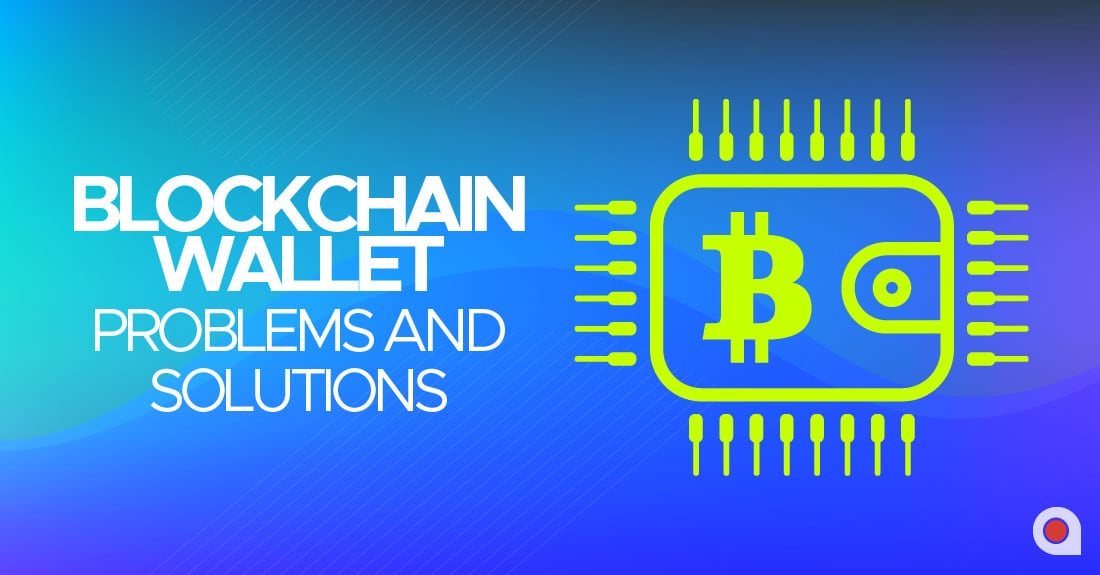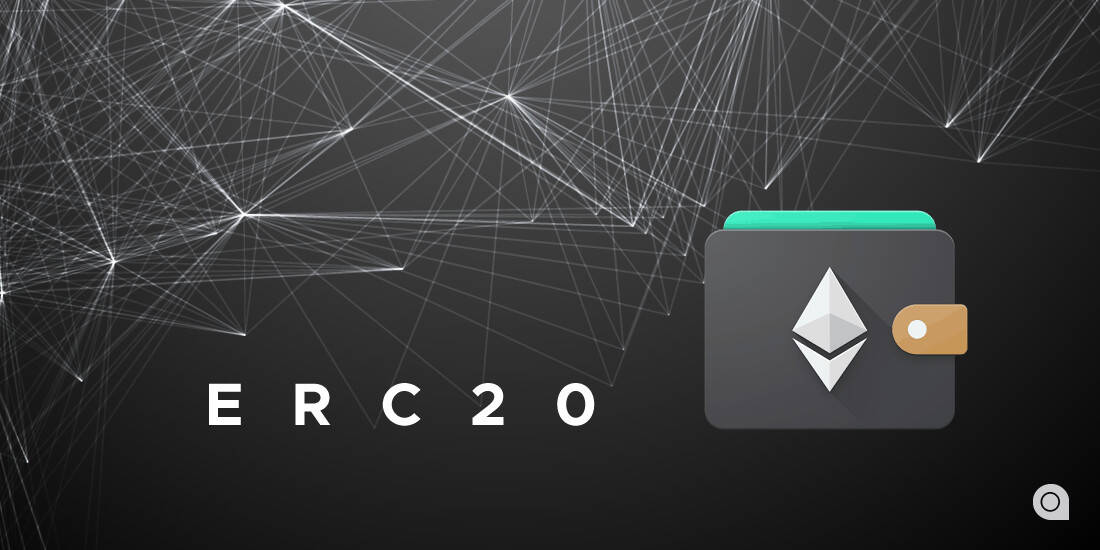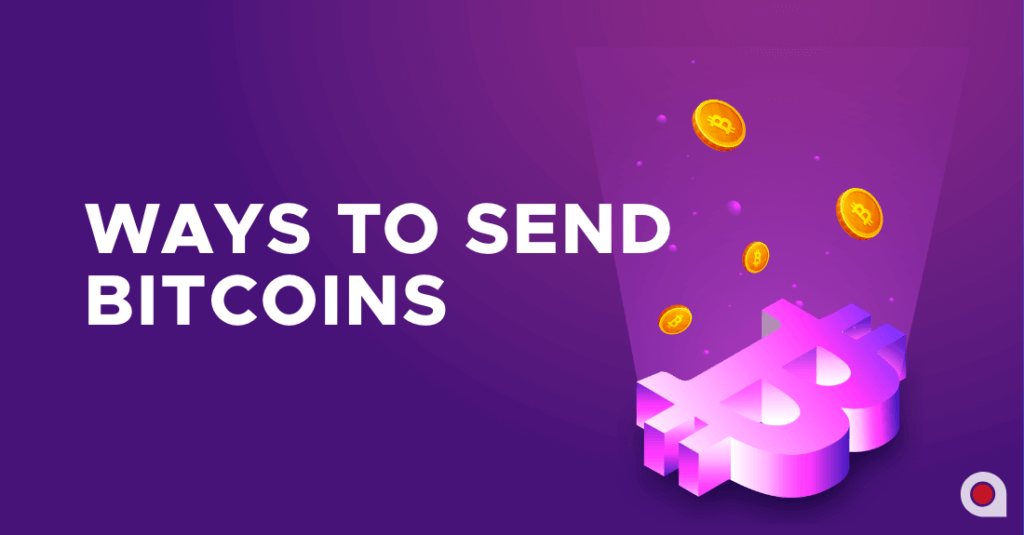
The use of blockchain wallets is gaining more popularity due to the emergence of new cryptocurrencies. Unfortunately, along with development, cryptocurrency users face different blockchain wallet problems. What to do if your blockchain wallet is not working? Below you will find out the most common problems, solutions, and step-by-step guides on how to initiate blockchain wallet backup.
Over the past several years, the development of blockchain technology has significantly increased cryptocurrency flow. Bitcoin appeared as the first cryptocurrency in 2009, but today, there exists a wide range of currencies to choose from. Among the most popular are: Bitcoin, Ether, Ripple (XRP), Bitcoin Cash, Litecoin, Tether, and others.
Consequently, there arises the need for secure and reliable cryptocurrency storage. It is important to keep in mind, though, that cryptocurrency safety fundamentally depends upon user responsibility. Surprised? In order to keep your funds safe, it is crucial to combine the knowledge of digital security and currency storage. Processed cryptocurrency transactions are irreversible. Therefore, in order to avoid becoming the victim of hacker attacks, you should always maintain protected access to public and private keys.
Types of Blockchain Wallets
To satisfy all user needs, there is a wide range of blockchain wallets to choose from. Before proceeding, make sure to learn all the details about blockchain wallets and their types here.
To put it simply, a blockchain wallet is just a combination of the user’s public address and a private key. The only feature differentiating wallets from each other is the type of storage. Hence, we can highlight the following major wallet types:
- Desktop wallets: you can download these and install on your personal computer. They are easy to access from your device, and safer than online wallets.
- Mobile wallets: these phone applications are quite handy. All you need to do is download the application and open an account.
- Online wallets: you can access your online wallet from any browser. These are also easy to set up and are commonly free.
- Hardware wallets: these wallets are similar to a pen-drive. They are universal and very easy to carry around.
- Paper wallets: These are paper documents with written public and private keys.
All of them have their stronger and weaker sides.

Recommendations
Taking into consideration the pros and cons listed above, one of the best approaches is a combination of wallet features. When using cryptocurrency in daily life, you should get the best from each blockchain wallet.
For instance, you can save your major capital in a paper wallet and keep it in a safe. This is a long-term investment with a great backup system. One of the cryptocurrency exchanges supporting paper wallets is Gemini. It provides users with enhanced security, liquidity, and trust. Gemini functions as a licensed crypto asset exchange. It allows buying, selling, and storage of all types of assets, securely and in compliance with regulations.
Hardware wallets are good for keeping around 20% of your total capital. This will allow you to carry some funds around and use them to purchase physical goods. In case of emergency, you can quickly reach it.
Speaking of monthly budgets, consider storing your funds in a mobile or online wallet. An online wallet is somewhat safer, as there is no chance of accidental application deletion. You can manage it at home from the browser of your choice. A mobile wallet does appear to be a bit more useful, as you can always have it with you. In any case, the choice is up to you!
Besides the pros and cons relating to convenience of use, there is also a range of safety issues. In order to eliminate them and ensure the highest possible security, it is crucial to discuss blockchain wallet problems and solutions.
Major Blockchain Wallet Problems
It has already been more than a decade since cryptocurrency became popular. Crypto fans and users have been trying out various ways of storing their assets in different wallets.
Nevertheless, we haven’t witnessed mass crypto adoption due to a number of problems related to blockchain wallets. The reason is that they require a pretty decent knowledge of digital security features. In addition, it appears to be somewhat impractical to use crypto for small payments and daily retail transactions.
A JP Morgan survey in 2017 questioned 1,500 U.S. customers and around 800 merchants and sellers in various industries. The survey’s goal was to find out their intentions for the use of various payment systems in the near future.
In 2017, only 16% of U.S. customers could process a transaction with the help of a digital wallet. Security risks turned out to be the major reason for the low adoption rate. About 36% of merchants were accepting this form of payment.
The graph below proves that merchants are more interested than consumers in switching to digital wallet usage five years from now:

Still, the number of blockchain wallet users has significantly grown since 2009, hitting over 25 million users as of June 2018.
Though the number of users has gradually increased, blockchain wallets haven’t seen massive adoption yet.
Let’s take a closer look at the four major issues preventing that:
1. Lack of Security
Given that security is of the highest priority when designing a digital wallet, the level of safety still varies from one to another. The greatest inconvenience is the fact that crypto exchanges can get hacked. Moreover, it is very easy to withdraw the users’ funds, as there is no tied-in wallet password. The reason for this is that user address storage is in a single file. As it contains a number of unique addresses connected to the user’s account, it appears to be a great target for hackers.
Solution: Research all wallets and their characteristics precisely in order to make a wise choice. Don’t store the majority of your funds in less-secure wallets. As we’ve mentioned, online wallets are great and convenient to use, but hackers always try to get a hold of them. Therefore, choose the most secure solutions. Consider paper wallets as an alternative. Here’s a short list of the most secure wallets of each type:
Desktop Wallets: Bitcoin Core, Armory
Mobile Wallets: Mycelium, Wirex
Online Wallets: Blockchain.info, BitGo
Hardware Wallets: Ledger, Keepkey, Trezor
Paper wallets: BitcoinPaperWallet, BitAddress
You can also find out more about ERC20 compatible wallets and their forms here.
Another tip is to choose cold storage. It stores user data separately on an isolated server. Cold wallets are slower, but contribute greatly to security. Even if an operating machine is attacked, the attackers won’t get a hold of the user’s data. Don’t use hot-storage wallets (with personal data stored directly on the server). Currently, most online wallets use cold storage. When choosing a wallet, make sure to double-check this.
2. The Problem of Not Dealing with Non-Cash Assets
Wallets commonly deal with cryptocurrency storage and management, and Bitcoin and Ether appear to be the most popular. The problem is that non-cash assets like IDs, personal data, or even smart contracts can’t be stored in digital wallets. In addition, it isn’t possible to use them when dealing with businesses not yet supporting cryptocurrency.
Let’s wait and see what the future holds. It’s pretty clear that wallets will be developing in order to provide more functions. Currently, it is possible to spend your crypto coins directly from cards (in certain cases). If you don’t possess any crypto, then a blockchain wallet probably isn’t for you yet.
3. Cryptocurrency Volatility
The nature of cryptocurrency itself is very volatile. Considering the Bitcoin example, one can see that its price fluctuates all the time. Between January and November of 2013, it rose by approximately 8% and then fell to half of its value. This is one of the reasons crypto is often used for speculation purposes, but less for long-term investment. Still, many cryptocurrencies are pretty much stable and their value depends upon demand. This is beneficial in terms of investment. The problem of mass adoption still remains. This is preconditioned by the fact that crypto isn’t commonly used as a traditional means of payment.
Solution: in order to avoid price volatility, the token should be designed on a strong economic basis, with an economic reason for its existence. In addition, it must have real utility or consensus value backing it up. A strong token is considered well-designed if it provides not only crypto liquidity, but also digitized asset value, flexibility over time, and beneficial exchange options.
Generally speaking, blockchain wallets could potentially replace the current banking system, though we should stress that this isn’t going to be a simple transition. To spread the use of blockchain wallets, users should increase their level of confidence and be aware of the programmable economy.
Common Problems and Solutions: Use Cases
Unfortunately, it sometimes happens that things don’t go as smoothly as planned. Applications fail, face reliability issues, or fail to carry out certain functions. Let’s take a look at the most common issues relative to blockchain wallet use and discuss possible solutions.
Bitcoin Wallet Issues: How to Recover Your Bitcoin Blockchain Wallet
One of the problems faced by Bitcoin mobile wallets is reliability. Sometimes, users fail to access their applications and have issues with logging in. In addition, their balance can mistakenly show as zero, which is pretty stressful if your account has some crypto in it.
Another issue isthe slow transaction-processing speed. Some users claim that it takes them several days to process a regular transaction. What’s more, they don’t receive confirmation, which also represents a disadvantage as concerns reliability.
The Blockchain wallet is private, and you are the only person who can log into it. Therefore, it is very important to remember your password in order to be able to access and manage your funds.
When facing issues with the wrong balance, first try to log in through the website and check is everything is fine. If no more problems occur, just reload your application and check for existing upgrades.
To recover your blockchain wallet and regain access, consider three main options:
Remind Option
You can set the remind function in case you forget your wallet ID (a personal, unique, assigned identifier). Your ID is combined with your password in order to log in. Make sure to provide a verified email address. Then you can request your wallet ID (in case you have forgotten it). You’ll receive it via email:

Recover Funds Option
One of the most common issues is forgetting your password and needing to recover your funds.
How to recover a blockchain wallet? When creating a wallet, first go to the Security Center and enter the Backup Funds section. Please note that your money will recover to an entirely new wallet. In addition, the system will generate a new Wallet ID for you. In general, this feature works the same for all types of wallets.
Considering that the phrase you’re using can provide anyone with access to your money, make sure to store it securely and offline. Security is prioritized, as anyone with your recovery phrase can use it to easily withdraw your funds.
To remember and save your phrase, press “Print Recovery Sheet” and download the PDF document. Write down the phrase, but make sure you do it in the same order. Next, proceed and press the “Backup Funds” button. You will see the words appearing in a group of four. Note them down, as well, and pay attention to spelling and case. Once you are ready, press the “Finish & Verify” button. After that, you’ll have to select four words out of the phrase in a random order. Once verification is completed, your security score will rise, and you’ll have your wallet backed up. Finally, confirm the procedure.
How To Verify Your Phrase
The process consists of several simultaneous steps:

Note: The featured process isn’t a match for Imported Address balances. If you store spendable funds within imported addresses, it is better to use the Transfer All function. This action will move your money from imported Addresses to those generated within your blockchain wallet.
Reset 2FA Option
If you lose your 2FA (Two-Factor Authentication) device, choose to receive the codes via instant message (SMS). 2FA serves as an additional layer of security. You can also receive it via Google Authenticator and Yubikey. It is important to keep the 2FA access updated.

You can request a 2FA if :
- you lose your device
- the device breaks or stops functioning
- you can’t access your verified e-mail
- you have delivery or delay issues
Finally, if your problems with blockchain wallet use have to do with transaction speed or trading issues, the best move is to contact Blockchain Support for further assistance. The request options are as follows:
- security and login problems (lost IDs, passwords, 2FA issues, compromised wallets)
- purchase, sell, or exchange problems (problems of trading and exchanging cryptocurrency within the wallet)
- problems relating to products (sending, receiving, or setting issues)
- company feedback and data (you can request more information on careers or advertising, or leave your comments and complaints)
- API issues (blockchain and API key support)
Browser-Related Problems
If you experience problems related to the use of a browser, force a complete site refresh. You can use the combination of CTRL + F5 simultaneously. Next, you’ll have to clear your browser’s temporary hash along with cookies. This will ensure the latest website version.
Follow these instructions:


Fix DNS Issues
DNS (or Domain Name System) identifies the website IP address with (*.com). You can use it to remember your data easily. It is similar to a webpage phonebook. Your ISP commonly provides such a service. To do so, you have to clear the local DNS cache, which will launch and load the latest cache of your ISP.
In Windows, you can go to “Start,” then choose “Command Prompt” and type in “ipconfig /flushdns”.
For more details having to do with operating systems, go to these instructions:
- Linux
- Windows
- Mac OS X
If you can easily access a webpage from any source but your personal computer, consider using alternative DNS services such as the following:
- OpenDNS
- Google Public DNS
How to Import Bitcoin Cash from Blockchain.info, Mycelium, and Jaxx
In the following guide, we will walk through the steps of recovering your funds from these wallets:
- blockchain.info
- Mycelium
- Jaxx
- other BIP44 compatible wallets
Step 1. Log into your wallet to view its features on your desktop browser. Go to “Settings” and choose “Tools”. Select “Import External Wallet”.

Step 2. After that, go to “BIP44 Compatible Wallet”:

Step 3. Provide the recovery phrase of the wallet from which you would like to import your funds.

We discussed the recovery phrase above. If you are working with blockchain.info, it is a twelve-word phrase you’ve noted in your PDF document. If you don’t remember it, go back to the recover funds option in your current wallet and follow the backup instructions.
Step 4. Press “Next.” The machine will look for your wallet’s positive balance.

After clicking the “Send” button, you are all set.
Another frequently-asked question is: how do I delete my blockchain wallet? And the answer is – it’s impossible. You can forget your private key or deactivate the wallet (if this feature is supported by your service provider). However, your wallet address will live on the blockchain (in some block) forever. This is one of the blockchain’s basic features.
Conclusion
We have discussed the main steps of blockchain wallet recovery. Remember, security is your priority. Before working with any wallet, make sure to research your options and choose the best match. Don’t store all of your funds in one wallet, and make sure to choose cold storage options. Keep your passwords, recovery phrases, and private keys safe. Don’t share them with anyone, and don’t store them online. In case any problems occur, you can use our instructions on how to backup your wallet. If your problem is more complex, make sure to contact your wallet’s support services.
Do you have any questions? Contact Applicature’s expert team.

 Blockchain Bitcoin Wallets in 7 minutes
Blockchain Bitcoin Wallets in 7 minutes
 ERC20 Compatible Wallets and Their Forms
ERC20 Compatible Wallets and Their Forms
 Methods of Sending Bitcoin
Methods of Sending Bitcoin
 Bitcoin Arbitrage: How Profitable Is Crypto Trading?
Bitcoin Arbitrage: How Profitable Is Crypto Trading?

When l joined l never protected my account, so l want it protected by having proper password to it.